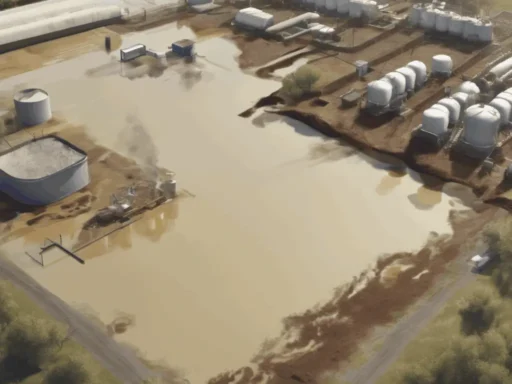Sodium cyanide (NaCN) is a chemical compound predominantly used in the mining industry, particularly in the extraction of gold and silver. It is highly effective in leaching precious metals from ores in a process known as cyanidation. However, its high toxicity poses significant environmental and health risks if not managed properly. This blog post explores the environmental impacts of sodium cyanide and the current technologies and methods used to mitigate these risks, including treatment of waste streams and cleanup efforts after spills.
Environmental Impact of Sodium Cyanide
Sodium cyanide is extremely toxic to living organisms. It works by inhibiting cellular respiration, leading to rapid organism mortality. This high level of toxicity is a major concern in environments surrounding mining sites where cyanide is used.
Aquatic Toxicity
When cyanide enters water bodies, either through improper disposal or accidental spills, it can have devastating effects on aquatic life. Fish are particularly sensitive to cyanide, which can lead to large-scale fish kills, affecting the biodiversity and ecological balance of aquatic habitats.
Soil and Plant Contamination
Sodium cyanide can also affect terrestrial environments through spills or leaching from waste heaps. It can degrade soil quality and prevent plant growth, disrupting local ecosystems and reducing biodiversity.
Impact on Human Health
Human exposure to sodium cyanide can occur through contaminated water, soil, or food sources. Acute exposure is deadly, while chronic exposure can lead to a range of health issues including respiratory, cardiovascular, and neurological effects.
Remediation Techniques
Given the significant risks associated with sodium cyanide, robust remediation and mitigation strategies are essential. These strategies are designed to treat contaminated waste streams and manage environmental contamination.
1. Cyanide Degradation Technologies
Several methods are employed to degrade cyanide in waste streams before they can harm the environment:
- Natural Degradation: Cyanide naturally degrades into less harmful substances such as ammonia and carbon dioxide when exposed to sunlight and air. However, this process can be slow and is not reliable for large quantities of cyanide.
- Alkaline Chlorination: This method involves treating cyanide with chlorine or hypochlorite under alkaline conditions. It converts cyanide into cyanate, which is a less toxic compound, and eventually into carbon dioxide and nitrogen compounds.
- Ozonation and Peroxidation: Both methods involve the oxidation of cyanide using ozone or hydrogen peroxide, respectively. These strong oxidants break down cyanide into harmless by-products.
2. Physical and Chemical Containment
To prevent environmental contamination, physical barriers and chemical treatments are used, especially in mining areas:
- Liner Systems: Synthetic liners and clay barriers are used to prevent cyanide leachates from penetrating into the soil and groundwater.
- Detoxification Chemicals: Chemicals such as sodium metabisulfite are commonly used to detoxify cyanide residues in ponds and tailings before they are released into the environment.
3. Bioremediation
Bioremediation involves using microorganisms to degrade contaminants like cyanide. Certain bacteria and fungi have been identified that can metabolize cyanide compounds, converting them into less harmful substances. This method is environmentally friendly and cost-effective for long-term remediation.
4. Emergency Response and Spill Cleanup
Rapid response strategies are crucial in the event of a cyanide spill. These include:
- Containment and Neutralization: Immediate containment using barriers followed by chemical neutralization using agents like hydrogen peroxide.
- Excavation and Removal: Contaminated soil may be excavated and removed to a secure disposal facility.
- Monitoring and Assessment: Continuous monitoring of the affected area is necessary to assess the effectiveness of the remediation efforts and to prevent further contamination.
Conclusion
The use of sodium cyanide, while effective for metal extraction, carries significant environmental risks. Through a combination of technological advancements and stringent regulatory frameworks, it is possible to mitigate these risks. Effective waste treatment, spill management, and remediation technologies are essential to protect ecosystems and human health from the adverse effects of cyanide. As the global community becomes increasingly aware of environmental issues, the development and implementation of safer and more sustainable practices in industries utilizing hazardous substances like sodium cyanide will be paramount.





